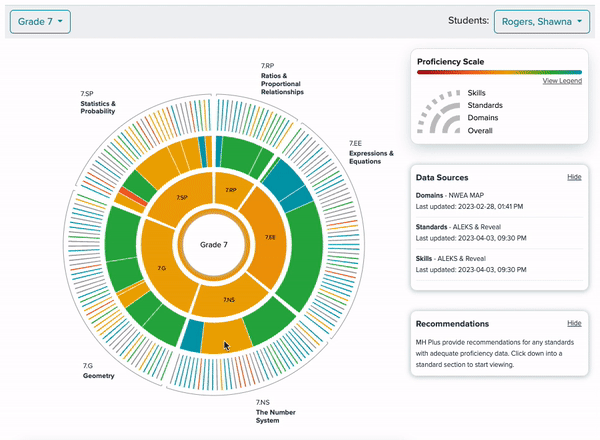BLOG: Innovative Technology Powers Innovative Instructional Models
Educator Dr. Keith Shoemaker shares how his school transformed instruction with data.

This post is sponsored by McGraw Hill.
As demands on teachers continue to grow, school leaders are looking to implement transformative instructional models that can free up teachers’ schedules – allowing them more time to provide individualized instruction. But transitioning to innovative models like standards-based grading requires innovative technology. McGraw Hill Plus for PreK-12 gathers data and makes it actionable, saving teachers time and making personalization scalable.

Dr. Keith Shoemaker, the Director of Teaching and Learning at a school implementing standards-based grading, has observed his teachers leveraging McGraw Hill Plus to promote student agency, ease teachers’ workflow, and fuel their transformation to a standards-based grading model. Keith believes McGraw Hill Plus creates efficiencies and makes it easier for teachers to interpret data, identify trends, and ultimately provide personalized instruction. He shares highlights from that experience below.
How might innovative technology drive innovative approaches to learning – freeing teachers to focus on instruction?
Technology provides access to vast amounts of data on student performance which enables our teachers to make data-driven instructional decisions, identify learning gaps, track student progress, and tailor instruction to meet the individual needs of all students in the classroom.
How is McGraw Hill Plus for PreK-12 an example of using innovative technology to drive innovative approaches to teaching and learning?
Our district has been implementing McGraw Hill Plus for PreK-12 in mathematics classrooms. This platform provides our teachers with real-time data on each of the students' progress by gathering insights from digital learning interactions. The program then utilizes that data to form flexible groups and personalized learning plans for each individual student. This frees up a lot of time for teachers and allows them to really focus on planning and providing targeted instruction to students based on their individual needs.
Tools and ideas to transform education. Sign up below.

The Standards and Skills Graph within McGraw Hill Plus also helps teachers track and visualize students' progress on our Pennsylvania Core Mathematics standards so that they can provide enrichment and remediation for students. The graph also helped students to really start owning their learning by having them reflect on their own progress as they master the standards and skills within the graph.
McGraw Hill Plus, combined with effective teaching practices, has really supported our teachers in implementing flexible grouping and providing targeted instruction to meet the diverse needs of our students.
Your district operates within a standards-based grading model. What advice do you have for school district leaders looking to implement transformational instructional models?
Our district went through various stages when creating our instructional model. Here are three that I feel are the most important.
1. We defined a clear and compelling vision for our instructional model that aligned with our district's goals, values, and the needs of our students and community by involving various stakeholders through the entire process.
2. We cultivated a culture that encouraged innovation, risk-taking, and continuous improvement. We created many opportunities for collaboration, professional development, and sharing of best practices among our teachers. We also encourage teachers to experiment with new instructional approaches, technologies, and strategies, and provide them with the necessary support and resources.
3. We embrace flexibility and adaptability by recognizing that our instructional model may need to evolve and adapt over time. We embraced feedback and lessons learned from our teachers, students, and other stakeholders. We were also open to making necessary adjustments and refinements to ensure the model remained effective and responsive to changing needs.
To learn more about McGraw Hill Plus for PreK-12, consider visiting the tool’s website here.
